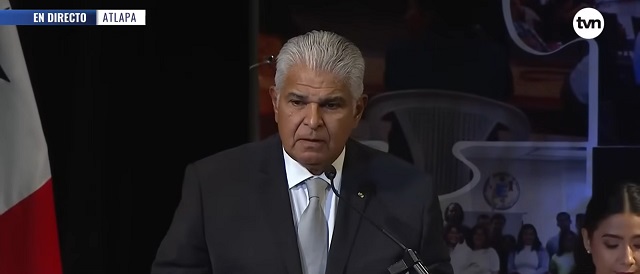Economy
Ottawa’s cap-and-trade plan long on costs, light on environmental benefits

From the Fraser Institute
” the Trudeau government’s new plan would reduce an already unmeasurable climate benefit to one even less measurable “
On Thursday, the Trudeau government unveiled its plan to cap greenhouse gas emissions from Canada’s oil and gas sector. The plan calls for a “cap-and-trade” system rather than a mandatory hard cap on emissions.
A previous plan would have required the oil and gas sector to reduce emissions by 42 per cent (from 2019 levels) by 2030. The new plan calls for a 35 per cent to 38 per cent cut (again, compared to 2019 levels by 2030). So the government has somewhat softened the target. However, the slight change is unlikely to improve the cost/benefit analysis for the sector or affected provinces.
As noted in a study published earlier this year, the Trudeau government’s previous plan would have resulted in at least $45 billion in revenue losses for the oil and gas sector in 2030 alone, which would imply a significant drop resource royalties and tax revenue for governments. And costs would ripple farther out from the oil and gas sector, into the plastics and petrochemical sectors, imposing more costs and threatening the employment of many Canadian workers in those sectors.
Crucially, according to the study, this economic gain would come with little or no environmental benefit. While the reductions would be large when only considering Canada’s oil and gas sector, the impact on climate change, which is a matter of global GHG concentrations, would be virtually nonexistent. The government’s previous plan called for Canada to reduce GHG emissions by 187 megatonnes in 2030, which would equate to four-tenths of one per cent of global emissions and likely have no impact on the trajectory of the climate in any detectable manner and hence offer equally undetectable environmental, health and safety benefits. In other words, the Trudeau government’s new plan would reduce an already unmeasurable climate benefit to one even less measurable.
And now, there are serious questions if the new plan will deliver even the miniscule climate benefit mentioned above. Under a cap-and-trade scheme, companies can trade in emission offsets if they’re unable to reduce emissions via their own technological processes, and to avoid cutting oil and gas production. But emission offset schemes are deeply dodgy.
As noted in a Guardian investigation of Verra, the world’s leading offset market—basically, organizations that reduce carbon in the atmosphere by tree-planting and other initiatives—more than 90 per cent of Verra’s rainforest offset credits (among the most commonly used by companies) are likely “phantom credits” and do not represent genuine carbon reductions. And as reported in the ultra-green Grist, rainforest credits are not the only bogus game in town. “In reality… the market for these offsets is ‘riddled with fraud,’ with offset projects too often failing to deliver their promised emission reductions.”
Canada’s domestic carbon offset market may be more robust than in other countries, but there’s no guarantee. If a significant share of Canada’s offsets prove to be as bogus as the international norm, GHG reductions from the oil and gas sector might be smaller still.
The Trudeau government’s new GHG cap on the oil and gas sector is a moderate improvement over the previous plan. The cap is a bit less stringent, and therefore might be easier to attain. And the use of cap-and-trade rather than a hard cap will give the oil and gas industry more flexibility, and more importantly, allow it to avoid curtailing production to satisfy the cap. But the plan still fails a critical cost/benefit analysis. It remains quite high in potential costs for Canada’s oil and gas sector, particularly in provinces which produce the most oil and gas, yet will deliver environmental benefits that are too small to measure.
Author:
Automotive
Governments in Canada accelerate EV ‘investments’ as automakers reverse course

From the Fraser Institute
Evidence continues to accrue that many of these “investments,” which are ultimately of course taxpayer funded, are risky ventures indeed.
Even as the much-vaunted electric vehicle (EV) transition slams into stiff headwinds, the Trudeau government and Ontario’s Ford government will pour another $5 billion in subsidies into Honda, which plans to build an EV battery plant and manufacture EVs in Ontario.
This comes on top of a long list of other such “investments” including $15 billion for Stellantis and LG Energy Solution, $13 billion for Volkswagen (with a real cost to Ottawa of $16.3 billion, per the Parliamentary Budget Officer), a combined $4.24 billion (federal/Quebec split) to Northvolt, a Swedish battery maker, and a combined $644 million (federal/Quebec split) to Ford Motor Company to build a cathode manufacturing plant in Quebec.
All this government subsidizing is of course meant to help remake the automobile, with the Trudeau government mandating that 100 per cent of new passenger vehicles and light trucks sold in Canada be zero-emission by 2035. But evidence continues to accrue that many of these “investments,” which are ultimately of course taxpayer funded, are risky ventures indeed.
As the Wall Street Journal notes, Tesla, the biggest EV maker in the United States, has seen its share prices plummet (down 41 per cent this year) as the company struggles to sell its vehicles at the pace of previous years when first-adopters jumped into the EV market. Some would-be EV makers or users are postponing their own EV investments. Ford has killed it’s electric F-150 pickup truck, Hertz is dumping one-third of its fleet of EV rental vehicles, and Swedish EV company Polestar dropped 15 per cent of its global work force while Tesla is cutting 10 per cent of its global staff.
And in the U.S., a much larger potential market for EVs, a recent Gallup poll shows a market turning frosty. The percentage of Americans polled by Gallup who said they’re seriously considering buying an EV has been declining from 12 per cent in 2023 to 9 per cent in 2024. Even more troubling for would-be EV sellers is that only 35 per cent of poll respondents in 2024 said they “might consider” buying an EV in the future. That number is down from 43 per cent in 2023.
Overall, according to Gallup, “less than half of adults, 44 per cent, now say they are either seriously considering or might consider buying an EV in the future, down from 55 per cent in 2023, while the proportion not intending to buy one has increased from 41 per cent to 48 per cent.” In other words, in a future where government wants sellers to only sell EVs, almost half the U.S. public doesn’t want to buy one.
And yet, Canada’s governments are hitting the gas pedal on EVs, putting the hard-earned capital of Canadian taxpayers at significant risk. A smart government would have its finger in the wind and would slow down when faced with road bumps. It might even reset its GPS and change the course of its 2035 EV mandate for vehicles few motorists want to buy.
Author:
Automotive
Red States Sue California and the Biden Administration to Halt Electric Truck Mandates

From Heartland Daily News
By Nick Pope
“California and an unaccountable EPA are trying to transform our national trucking industry and supply chain infrastructure. This effort—coming at a time of heightened inflation and with an already-strained electrical grid—will devastate the trucking and logistics industry, raise prices for customers, and impact untold number of jobs across Nebraska and the country”
Large coalitions of red states are suing regulators in Washington, D.C., and California over rules designed to effectively require increases in electric vehicle (EV) adoption.
Nebraska is leading a 24-state coalition in a lawsuit against the Environmental Protection Agency’s (EPA) recently-finalized emissions standards for heavy-duty vehicles in the U.S. Court of Appeals for the D.C. Circuit, and a 17-state coalition suing the state of California in the U.S. District Court for the Eastern District of California over its Advanced Clean Fleet rules. Both regulations would increase the number of heavy-duty EVs on the road, a development that could cause serious disruptions and cost increases across the U.S. economy, as supply chain and trucking sector experts have previously told the Daily Caller News Foundation.
“California and an unaccountable EPA are trying to transform our national trucking industry and supply chain infrastructure. This effort—coming at a time of heightened inflation and with an already-strained electrical grid—will devastate the trucking and logistics industry, raise prices for customers, and impact untold number of jobs across Nebraska and the country,” Republican Nebraska Attorney General Mike Hilgers said in a statement. “Neither California nor the EPA has the constitutional power to dictate these nationwide rules to Americans. I am proud to lead our efforts to stop these unconstitutional attempts to remake our economy and am grateful to our sister states for joining our coalitions.”
(RELATED: New Analysis Shows Just How Bad Electric Trucks Are For Business)
While specifics vary depending on the type of heavy-duty vehicle, EPA’s emissions standards will effectively mandate that EVs make up 60% of new urban delivery trucks and 25% of long-haul tractors sold by 2032, according to The Wall Street Journal. The agency has also pushed aggressive emissions standards for light- and medium-duty vehicles that will similarly force an increase in EVs’ share of new car sales over the next decade.
California’s Advanced Clean Fleet rules, meanwhile, will require that 100% of trucks sold in the state will be zero-emissions models starting in 2036, according to the California Air Resources Board (CARB). While not federal, the California rules are of importance to other states because there are numerous other states who follow California’s emissions standards, which can be tighter than those required by the EPA and other federal agencies.
Critics fear that this dynamic will effectively enable California to set national policies and nudge manufacturers in the direction of EVs at a greater rate and scale than the Biden administration is pursuing.
Trucking industry and supply chain experts have previously told the DCNF that both regulations threaten to cause serious problems for the country’s supply chains and wider economy given that the technology for electric and zero-emissions trucks is simply not yet ready to be mandated at scale, among other issues.
Neither CARB nor the EPA responded immediately to requests for comment.
Nick Pope is a contributor to The Daily Caller News Service.
Originally published by The Daily Caller. Republished with permission.
-

 City of Red Deer2 days ago
City of Red Deer2 days agoCity Council paving the way for more house suites, backyard suites, tiny homes, and duplexes
-

 Uncategorized1 day ago
Uncategorized1 day agoRCMP recruitment failure has Alberta advocacy group calling for Provincial Police Service
-

 Opinion2 days ago
Opinion2 days agoCanada’s fertility, marriage rates plummet to record lows: report
-

 Automotive7 hours ago
Automotive7 hours agoGovernments in Canada accelerate EV ‘investments’ as automakers reverse course
-

 COVID-1918 hours ago
COVID-1918 hours agoJapan’s most senior cancer doctor: COVID shots are ‘essentially murder’
-

 Health1 day ago
Health1 day agoPrivate Footage Reveals Leading Medical Org’s Efforts To ‘Normalize’ Gender Ideology
-

 Health1 day ago
Health1 day agoTHE WPATH TAPES: Behind-The-Scenes Recordings Reveal What Top Gender Doctors Really Think About Sex Change Procedures
-

 illegal immigration2 days ago
illegal immigration2 days agoPanama’s Incoming President Wants To Shut Down His Country’s Most Treacherous Route For Migrants — But Will It Work?







